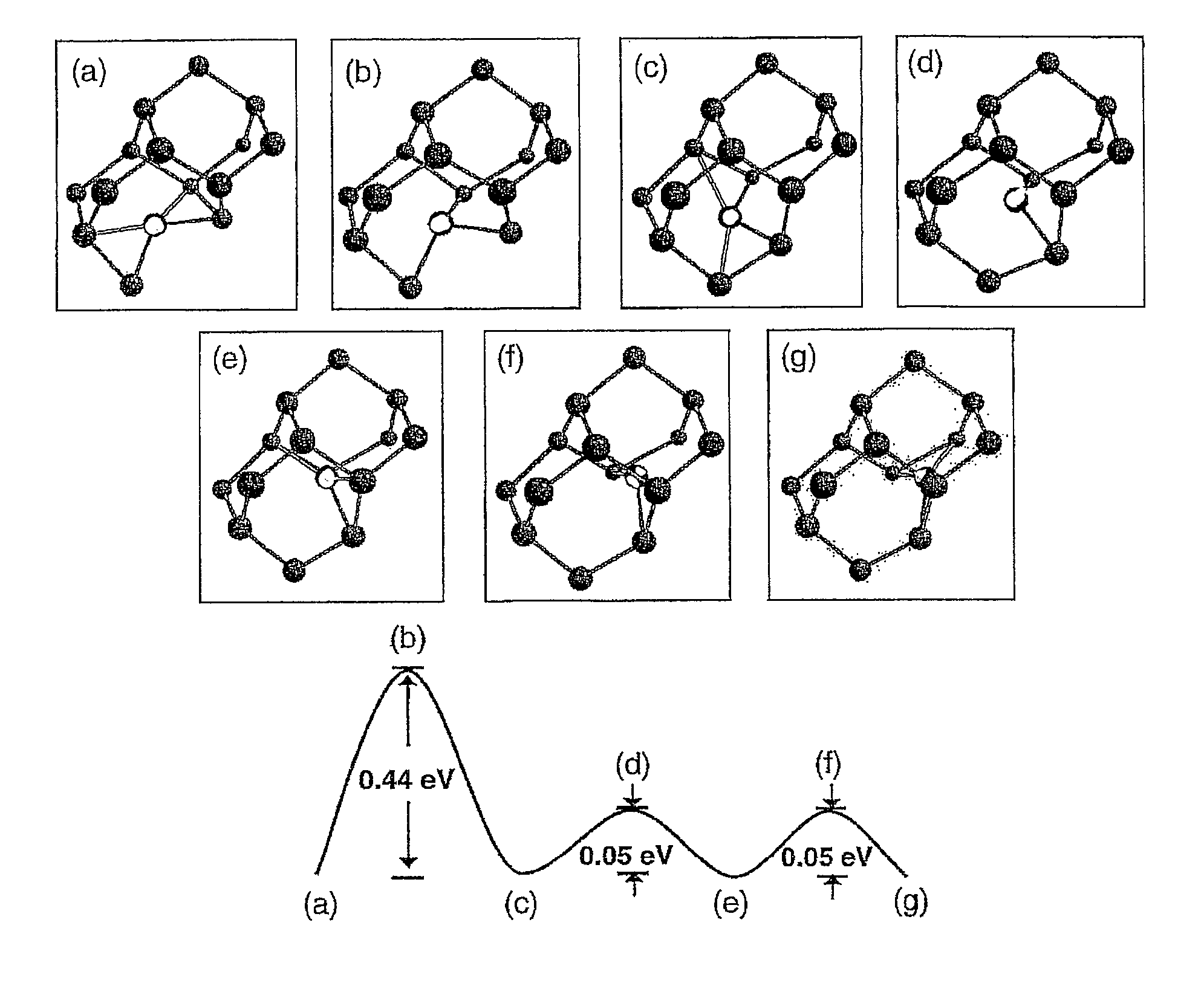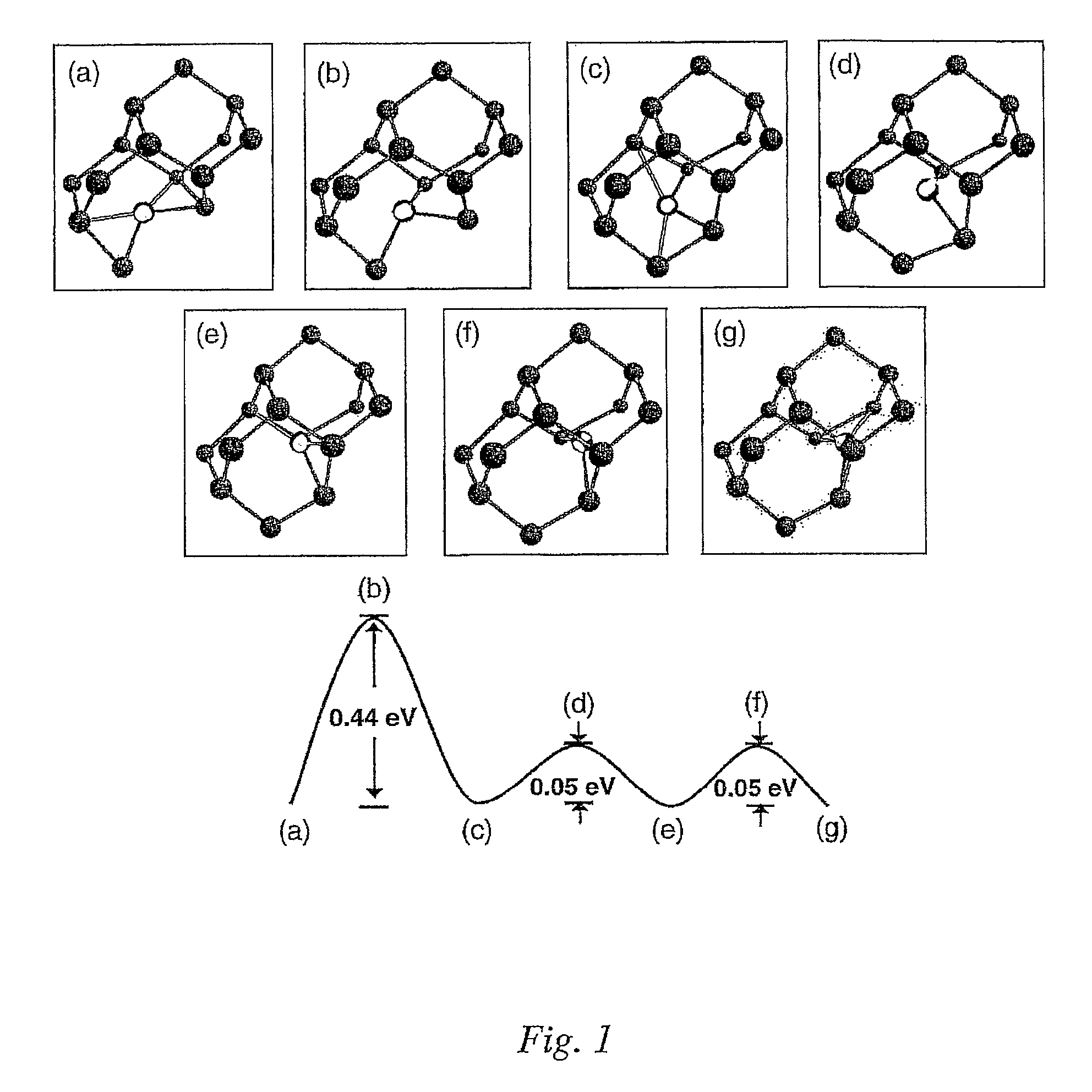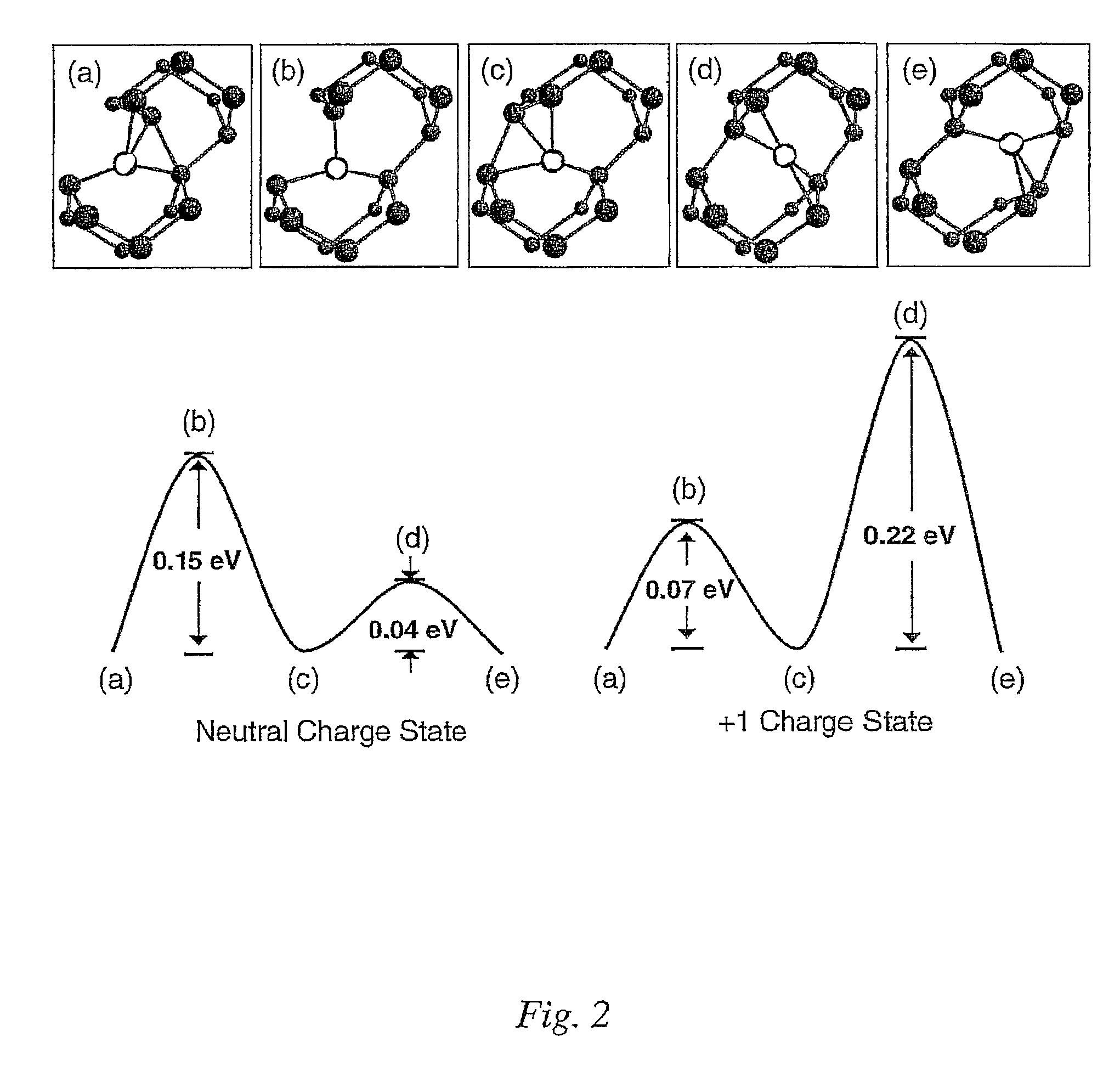Method for predicting contributions of silicon interstitials to n-type dopant transient enhanced diffusion during a pn junction formation
a technology of enhanced diffusion and silicon interstitials, applied in the field of predicting properties, can solve problems such as large hurdles and severe dopant profile broadening
- Summary
- Abstract
- Description
- Claims
- Application Information
AI Technical Summary
Benefits of technology
Problems solved by technology
Method used
Image
Examples
Embodiment Construction
[0016]Arsenic (As) is the most common n-type dopant used in the fabrication of silicon (Si)-based electronic devices by virtue of its high solubility, high activation, and low diffusivity. It has been determined that silicon interstitials (Sii) contribute to As transient enhanced diffusion (TED) during pn junction formations. For the negatively charged As—Sii pair, it was found that a minimum energy structure in which the As atom bridges two lattice Si atoms, while for the neutral and positively charged As—Sii, the lowest energy structure includes an As—Sii pair that is aligned in the direction while sharing a lattice site. Such results suggest that, in n-type extrinsic regions, the diffusion of −1 charged As—Sii pairs will be prevailing with an overall activation energy of 3.0-3.3 eV, while under intrinsic conditions, the neutral and −1 charged pairs will both contribute to As diffusion.
[0017]Referring now to the drawings and in particular to FIG. 1, there is illustrated a diffusio...
PUM
 Login to View More
Login to View More Abstract
Description
Claims
Application Information
 Login to View More
Login to View More - R&D
- Intellectual Property
- Life Sciences
- Materials
- Tech Scout
- Unparalleled Data Quality
- Higher Quality Content
- 60% Fewer Hallucinations
Browse by: Latest US Patents, China's latest patents, Technical Efficacy Thesaurus, Application Domain, Technology Topic, Popular Technical Reports.
© 2025 PatSnap. All rights reserved.Legal|Privacy policy|Modern Slavery Act Transparency Statement|Sitemap|About US| Contact US: help@patsnap.com



